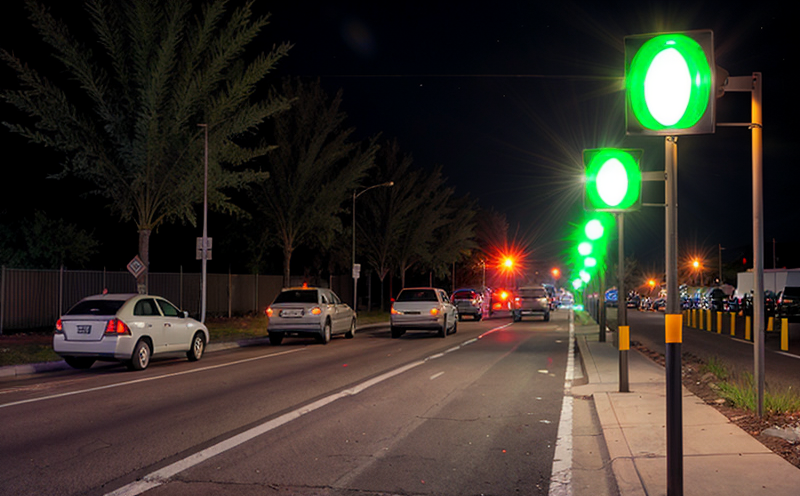CIE 188 Photometric Testing of Traffic Signal LED Systems
The CIE (Commission Internationale de l'Éclairage) Publication 188 standard provides a comprehensive framework for the photometric testing of traffic signal LED systems. This standard is essential to ensure that traffic signals meet stringent performance criteria, which are critical for safety and visibility in urban environments.
Photometric testing under CIE 188 involves measuring the luminous intensity distribution of an LED traffic signal system across a full range of angles. The goal is to provide accurate information about how the light source behaves under different conditions, such as during daylight or at night. This data helps ensure that signals are visible and legible to drivers and pedestrians from all angles.
The testing process begins with careful preparation of the LED traffic signal system for measurement. Specimens must be mounted in a way that simulates real-world usage, ensuring accurate representation of their performance under typical operating conditions. Calibration of the photometric measuring equipment is crucial; only precise instruments can provide reliable data.
Once calibrated, the testing process involves illuminating the LED traffic signal system and recording its light output at various angles across a full 360-degree field. The data collected includes luminous intensity values in candela (cd) at each angle, which are then plotted on an IES (Illuminating Engineering Society) photometric file.
This photometric testing ensures compliance with international standards such as ISO 9407-1 and ISO 9407-1: This standard provides a comprehensive framework for photometric testing of luminaires, which includes LED traffic signals.





